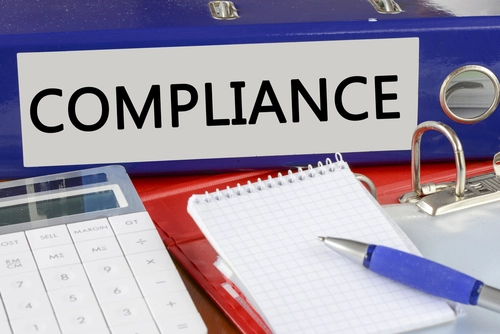EM Coding Alert
Check for Anesthesia Before Using This Otolaryngology Code
Hint: Use of anesthesia in an exam may be considered atypical. Some otolaryngologic encounters require patients to be put under anesthesia before the otolaryngologist can perform an exam. In such situations, you may look to 92502 (Otolaryngologic examination under general anesthesia). However, patient visits requiring anesthesia are not common. If you need to report this code, follow these key steps. Plus, if you want to receive payment, make sure you avoid a common myth. Understand When Circumstances Warrant 92502 Routine otolaryngologic evaluations can typically be performed without any issues, but there are a wide variety of circumstances that can deviate from the norm. In instances when this deviation prompts the physician to use anesthesia before performing the exam, you should report the service using 92502. Before getting into rules and guidelines dictating when 92502 should be reported, you should consider all the various instances that may require the use of this special circumstance code. First, some children may be considered for this service if they do not have the temperament to withstand the type of extensive otolaryngologic examination included in 92502. Additionally, other children and adults with disabilities, or behavioral or temperamental issues, will also be considered. Certain developmental impairments may prevent the physician from effectively communicating with the patient the purpose of the examination. Patients with an autism diagnosis, for instance, may be considered eligible for this anesthesia procedure if their caregivers feel the examination may be frightening or traumatic for the patient. Some outcomes may not be able to be duplicated when the patient is awake, but can be replicated when the patient is asleep. Otolaryngologic exam under general anesthesia would be deemed appropriate if this was the case. Lastly, this examination may be performed on a patient that has already been placed under general anesthesia for a separate reason. For instance, a trauma victim that requires a diagnostic otolaryngologic checkup may be billed for a 92502 by an on-call otolaryngologist. Compare Guidelines Between Several Sources Before reporting 92502, you’ll want to make sure you address all the related rules and guidelines surrounding the use of this code. First, like all codes listed under the Special Otorhinolaryngologic Services in the Medicine chapter, 92502 falls under these guidelines: Essentially, these two sets of guidelines convey the same piece of information: Don’t report 92502 for a separate diagnostic or therapeutic service that would typically fall under an evaluation and management (E/M) code. This brings you to the National Correct Coding Initiative (NCCI) Policy Manual guideline involving separate otolaryngologic procedures that also require general anesthesia: This guideline is relatively straightforward. Use the example of a tympanoplasty performed in addition to a 92502 examination. Performing an NCCI edits check on 92502 and 69436 (Tympanostomy (requiring insertion of ventilating tube), general anesthesia), you’ll see 92502 bundles into 69436 as a column 2 code. That means you’ll only be reporting the tympanoplasty in this case. The same concept applies to any other otolaryngologic surgical procedures that involve general anesthesia. This gets even trickier when you factor in a service that does not bundle into an E/M code, but also does not require general anesthesia. Consider the example of 92502 and 69210 (Removal impacted cerumen requiring instrumentation, unilateral). Here, you’ll simply perform another NCCI edits check to reveal that 69210 is bundled into 92502 with a modifier indicator of “0,” which means you can never bill 69210 along with 92502. Consider These Rules About the Exam Itself The final hurdle to overcome when learning when, how, and where to report 92502 involves the examination itself. It’s a common misconception that, to report 92502, the provider must perform a complete otolaryngologic examination. However, a thorough examination of one specific site justifies the use of 92502 without modifier 52 (Reduced services). For instance, the provider may opt to put a child under general anesthesia to evaluate for a potential nasal fracture. An examination of the nose and nasal passageway is sufficient to justify reporting 92502. Remember, however, that if the physician subsequently performs a closed treatment of the nasal fracture with stabilization, you can code only 21320 (Closed treatment of nasal bone fracture with manipulation; with stabilization). Code 92502 is considered bundled in the fracture repair. The same concept applies to examinations involving the ear, sinuses, pharynx, or larynx. Therefore, the examination itself warrants reporting 92502 when the patient is under anesthesia, but you typically won’t report this code along with other exams or procedures.

Related Articles
EM Coding Alert
- Prolonged Services:
Don’t Forget to Document These Crucial Non-Face-to-Face Components of Care
Know the do’s and don’ts of capturing payment for the work beyond patient encounters. Providers [...] - Specialty Spotlight:
Check for Anesthesia Before Using This Otolaryngology Code
Hint: Use of anesthesia in an exam may be considered atypical. Some otolaryngologic encounters require [...] - Case Study:
Try Your Hand Coding This Common Podiatry Scenario
Consider patient status to choose accurate E/M service code. If you work with a podiatrist, [...] - You Be the Coder:
Determine Coding for This Carpal Tunnel Encounter
Question: Notes indicate that the provider performed an office evaluation and management (E/M) service for a [...] - Reader Questions:
Remember An Appeal is a Tool You May Sometimes Need to Use
Question: I have a maternal fetal medicine (MFM) doctor who does an inpatient evaluation and management [...] - Reader Questions:
Evaluate Two Options in This Sibling Patient Scenario
Question: A parent brought in their two children for follow-up visits of their chronic asthma. Currently, [...] - Reader Questions:
Don’t Get Confused by the Similarities in These After-Hours Codes
Question: When it comes to billing after-hours or evening codes, is it true that there’s no [...]




